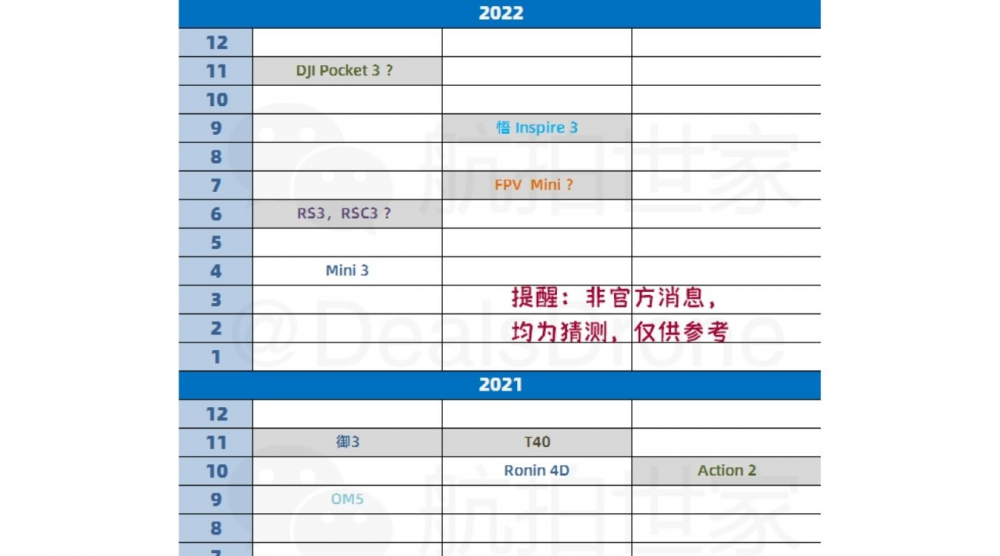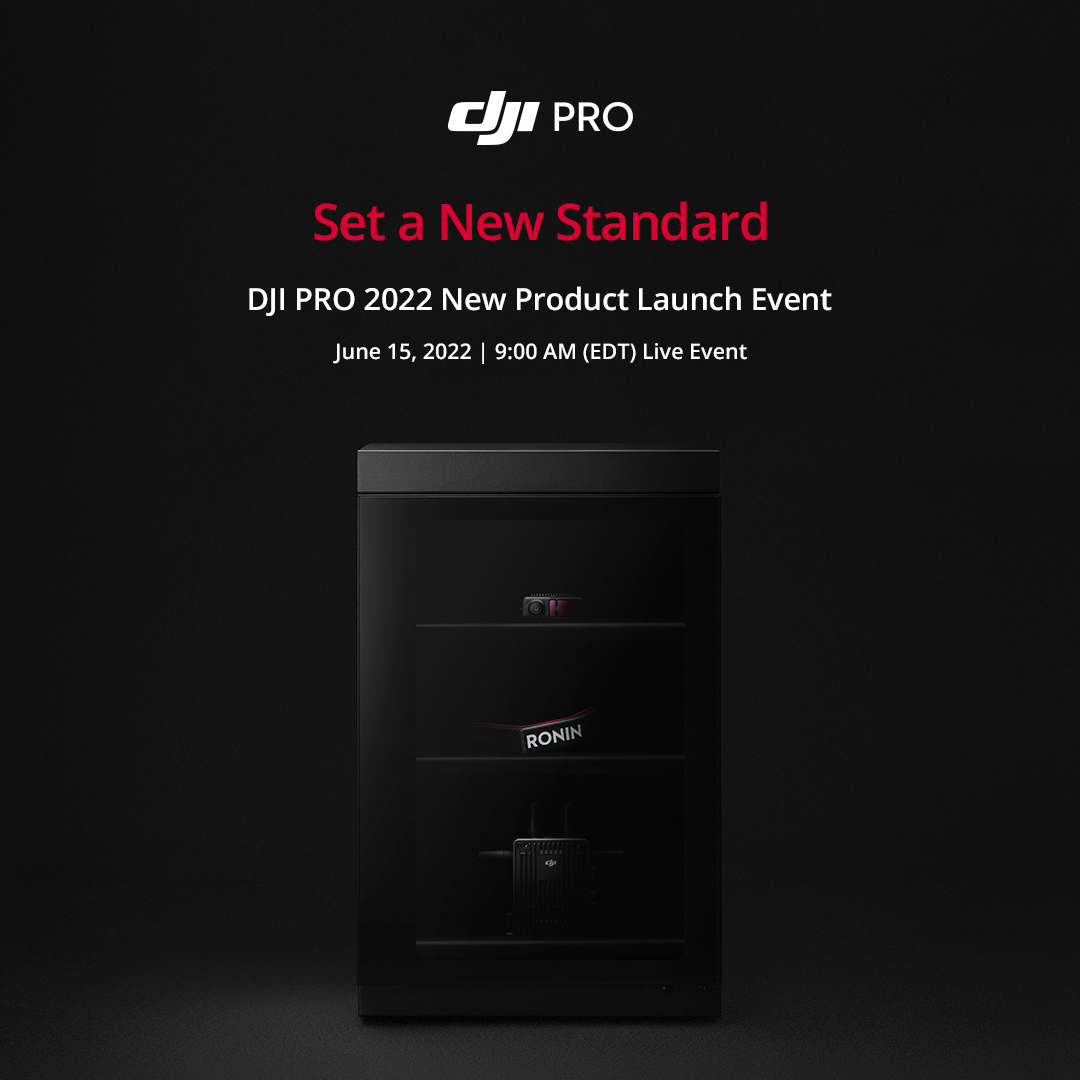
androidlad
-
Posts
1,215 -
Joined
-
Last visited
Content Type
Profiles
Forums
Articles
Posts posted by androidlad
-
-
-
48 minutes ago, markr041 said:
The GoPro Hero 11 already has the highest resolution 240 fps, at 2.7K of any camera. Almost all other cameras of any price limit 240 fps to 1080. 2.7K has twice the resolution of 1080.
DaVinci Resolve Studio has a feature that enables super scaling resolutions to higher values using AI. Going from 2.7K to 4K requires a doubling of resolution.
So, how does 2X superscaled 4K 240P look to get 8X slow motion? Here's a 4K test:
The way 2.7K is derived from 5.5K sensor produces severe aliasing, and no AI superscaling can hide that.
-
13 hours ago, Caleb Genheimer said:
Yep sounds like we’re on the same page. Not 100% on the Pocket cams, but if they’re 14-bit, they’re doing something wrong, because it performs just like 12-bit (pretty sure that’s what it is though).
The XH2s is indeed one of the outliers. Hopefully that means 14-bit is coming to full frame soon. It makes sense Fuji would do it in their S35 cam, as the have a FF “gap” in their lineup (APSC straight to Medium Format).
14bit readout on X-H2s absolutely does not offer any tangible benefits. The sensor design cannot take adavantage of higher bit-depth readout as the extra bits are really only there to quantise noise.
-
No. RED partners with Tower Semiconductor to design and manufacture CMOS sensors.
-
-
-
https://canon.jp/business/solution/indtech/cmos/lineup
LI7080SA Super 35mm 4K: 14Bit 120fps, DGO support and 16+ stops of dynamic range. Double the readout speed compared to C300M3's 6.4μm 4K/60fps DGO and stable power consumption. A professional high-performance Super 35mm 4K 120fps high dynamic range sensor that can take on full frame.
LI5030SA Global shutter FF 5.7K: 170Ke- large FWC (equivalent to ISO54), 1.8e-rms at 18dB gain (equivalent to ISO160), 15EV dynamic range, stable power consumption, with RGB/monochrome/RGB-IR/CFA-free versions. One of the top performing global shutter sensor, no image quality compromise compared to regular sensors, however readout speed is on the slower side - 5.7K 1.9:1 12bit 64fps.
- billdoubleu, Sharathc47 and Juank
-
 3
3
-
6 minutes ago, Django said:
Alexa is the gold standard for non global shutter performance.. it has something like 5ms.
I'm talking hybrids with +20ms. Its becoming a concern especially when mechanical shutters are starting to disappear..
Alexa is no longer the gold standard for non global shutter performance.
It's Sony VENICE 2, it has 3ms rolling shutter.
The latest Alexa 35 is 8ms, Alexa Classic and LF both ~7ms, Alexa 65 ~16ms.
-
Quote
According to the interview, the sensor, deemed ‘Sapphire F8,’ offers DCI 8K (8192 x 4320px) global shutter recording at up to 60fps. Drop that down to 4K and you’ll get 240fps and at 1080, you’ll get 360fps. Elbourne states in the interview that the Sapphire F8 will offer up to 15 stops of dynamic range with 12-bit capture across all capture modes.
-

1. The pixel-level read node design is similar to IMX610, only the implementation is different and dictates that it has fast conventional read speeds.
2. The physical pixels are 49 megapixels and the entire sensor is natively designed to be 49 megapixels, reusing the 4.2um BSI pixel design and using both analogue binning and digital binning together to achieve a 12 megapixel sensor.
3. IMX510 disables the all-pixel readout mode, so there is no possibility of an all-pixel readout, and naturally it cannot achieve 2x2 OCL AF, which is the biggest difference between it and IMX472.
4. Dividing IMX510's logical pixel into four physical pixels. The readout is achieved using 1:2 analogue binning before PGA and digital binning after ADC. The specifics are:
A. 48 physical megapixels, divided into upper left, upper right, lower left and lower right in-group pixels.
B. 24 mega pixels are read, binned in the form of upper left + lower right, upper right + lower left, dual stream 14bit readout.
C. 2:1 pixel binning in the digital domain to generate 12 megapixels at 15bit, discard 1bit to 14bit output.
D. The readout speed is around 21ms, approximating 48fps; when the precision is reduced to 12bit, 96fps can be achieved.
E. The ADC does not have an 11bit mode, so it cannot achieve the faster 24M 11bit -> 12M 12bit.
F. The digital binning discards 1bit of precision regardless of the mode of output, a waste of performance deliberately designed into IMX510.
G. In one video mode, the internal readout of two 3.84K/128fps 12Bit ADC streams are digitally binned, but the resolution is not twice that of 3.84K. The precision and resolution are wasted.5. Due to the uniqueness of the readout mode, IMX510 cannot achieve any 2x1 OCL in-group AF, and the orthogonal readout pixel groups cannot be used for phase detection. Therefore the only phase focusing design for the IMX510 is masked PDAF. A focusing method using 2x2 OCL AF will only be available when the all-pixel readout mode is unlocked.
6. The hardware performance of the sensor goes well beyond the limitations of the "IMX510" name.
7. If this sensor were to be a normal Bayer sensor, the readout speed would depend only on the total number of analogue pixels before the ADC, due to the pixel readout design. Thus 48 megapixels at 24fps 14bit. For this a Modified Bayer CFA can be used, which is suitable for pixel designs with 2:1 analogue signal binning - maximising its performance and enabling dual mode switching between high resolution and oversampled high speed shooting:
Crop to 16:9 to achieve 8.5K/57.7fps 12bit, 2x4.35K/115.5fps 12bit respectively; crop slightly to 7.68K/64fps 12bit, 2x3.84K/128fps 12bit.
Notably, its 2x3.84K/128fps 12Bit readout truly has double the resolution and achieves IMX301-like oversampling performance (Sony F65RS).8. The readout speed of any column-parallel ADC design of an image sensor must be scaled by the line readout speed, by the total number of pixels multiplied by the number of columns, and at the same level of precision comparing:
A 48 megapixel 14bit 24fps sensor reads at a larger scale than a 12 megapixel 14bit 48fps sensor, but we cannot call it a greater total number of pixels read out, but rather a faster readout, measured by miliseconds.
At a given precision, readout time (the time taken to read a frame), readout scale (how many pixels are read in a second), and readout speed (how many rows of pixels can be read in a second by a column of ADCs), are three dintinctly different and important metrics. -
7 hours ago, markr041 said:
I certainly easily see a difference, but I don't understand this comparison - the "Original" lens is shot in Linear mode, which crops the sensor, and the mod lens shot is not cropping, it is shot in Wide mode. So, the original-lens image is blown up (zoomed) from a crop of the sensor to have the same FOV as the glass lens, which is not a crop. You can tell the "original" image was a cropped since there is no bending at the edges. That can account for the relative softness. Just explain why you cropped the image for one lens and not the other. Or are both crops? By how much for each? What is going on exactly?
Because the other advantage of the glass lens mod is that it has no distortion. The closest mode is "wide" that does not engage the software distortion correction (it's going to distort the already linear image if using "linear"). The slight zoom is only around 1.1x, the effect on softness and image resolution is negligible.
-
On 10/2/2022 at 4:09 PM, markr041 said:
Any evidence you have that this "all-glass" mod is actually better? This is just a claim. I don't see "softness" in GoPro videos. That is the least issue of GoPro image quality as far as I can see.
Post a video showing the alleged improvement.
Comparison of the glass lens mod and original plastic lens:

The stock lens is evidently more hazy and less detailed, demonstrated here and by some of the face crops in a previous reply.
Look at the power lines, poles and especially the inscription text.
-
The stock lens on GoPro is plastic with evident haloing and softness. A third party all-glass lens mod is available (Hero 10 for now):
-
On 9/25/2022 at 12:03 AM, markr041 said:
GoPro labs enables upping the HEVC bitrate to 200 Mbps. So, 10bit color, 5.3K 60 fps, 180-200 Mbps.
The Labs firmware allows for 2 to 200Mbps arbitrary bitrate configuration. However at maximum 200Mbps, the camera can lock up at times.
It also works for previous generation Hero cameras as well.
-
8 hours ago, Jay60p said:
Months ago I did extensive testing comparing my X-T3 color to my Canon T2i. I finally came to two
conclusions, different from my last post.1) I find the Cr channel completely useless for evaluating the chroma resolution or any other color quality of the X-T3. It is quite bizarre and completely misleading. Instead, study the usual RGB channels which appear completely normal and are as detailed as the actual full color photo. There is no red resolution being lost in the Red RGB like there appears to be in the Cr channel. I’m guessing the Cr channel is useless for image manipulation too, which may be why it was so hard to find an App which would display it.
2) The Canon had always showed more saturation in the darker reds compared to the X-T3. So I went and studied the shot comparisons between cameras at the Imaging Resource Comparometer:
https://www.imaging-resource.com/IMCOMP/COMPS01.HTM
Select the “Still Life 400” samples for X-T3 and any other camera to compare the same scene.
In the X-T3 samples, The dark reds in the cloth on the left side appear lightened and/or slightly desaturated compared to all the other brands, not just Canon. This happens in solid color fields, not just red spots like foliage.Why does the X-T3 lighten/desaturate dark reds? I’m guessing the face is the most important image for Fuji’s color science. Perhaps the Fuji engineers discovered that this could downplay skin blemishes, which are often of a darker red color than the rest of the skin.
In any case the good news is this:
I checked Fuji’s online specifications for the X-H2S. And guess what, there is a provision for a setting
Labeled “Smooth Skin Effect”, listed right after “Color chrome Blue : Strong, Weak, Off”.
The actual settings are blank at the moment for the smooth skin effect. In future firmware there may
be an “off” setting available. Maybe then those faint red leaves will appear in the foliage.https://fujifilm-x.com/global/products/cameras/x-h2s/specifications/
Great finding. But the "Smooth Skin Effect" is a blur effect only, it was added to GFX cameras a long time ago, it does not affect colour. Default is off and it has to be switched on.
-
4 hours ago, Attila Bakos said:
Okay, for those who find this kind of stuff interesting, here is a comparison of Cr channels (with added contrast for easy visualisation) from the C70, X-T3, and X-H2s:
https://www.dropbox.com/s/pbfjdx4c2zxhhzq/chroma_compare.mp4?dl=1C70 is C-Log3, 100Mbps
X-T3 is F-Log, 400Mbps
X-H2s is F-Log, 360MbpsThere is definitely an improvement over the X-T3.
(I only received this files from someone, so I can't do other comparisons.)Thanks. There seems to be very little, if any, difference between X-H2s and X-T3 in this clip.
-
Fuji X-H2S
In: Cameras
It also means that the F-log banding/colour botch issue still exists, also for F-log2.
-
Fuji X-H2S
In: Cameras
10 hours ago, Attila Bakos said:Just noticed that the official F-Log LUTs for the X-H2s are exactly the same as for the X-T3/4. Even the Eterna LUT, which is a well defined look. If that's the same, then the F-Log source that it's applied on has to be the same as well. Makes me think... did Fujifilm tweak color data coming from this new sensor to match X-Trans IV sensors, or the sensor is not that different after all?
I mean, the F-Log LUTs for X-Trans III and X-Trans IV are clearly different, why are they the same for X-Trans IV and the new X-Trans CMOS 5 HS?Because the photosenstive layer of the new X-Trans V HS is essentially the same as X-Trans IV, hence their colorimetry is the same so F-log implementation was copied over.
-
5 minutes ago, Emanuel said:
Seems Osmo Pocket 3 is coming this November:
The story here:
DJI Pro will be announcing a new camera product on 15 June:

-
Fuji X-H2S
In: Cameras
5 hours ago, Attila Bakos said:This turned out to be fake, if Fujirumors is to be believed:
https://www.fujirumors.com/update-imx671-is-not-the-sensor-of-fujifilm-x-h2s/It's not fake.
Nobody said it IS the sensor of X-H2S, which is based on that sensor but with Fujifilm's customisation.
-
5 hours ago, Django said:
Ok interesting but my main question is then why go done this route?
Wouldn't it have made much better sense if the photo side of A7S3 was 48MP and flip to 12MP for video or lowlight photography as you suggest those 100MP smartphones do?
That would really be best of both worlds no? Why lock it down to 12MP only? There is still MP sacrifice going on.
Yes it would have been much better for the users, but Sony didn't go that route from an R&D and markerting perspective.
Sony already has BSI 4.2um products, so it would be easier than developing 8.4um products from scratch. Not unlocking 48MP mode seems to be product segmentation strategy, no a sacrifice due to technical capability.
-
1 hour ago, SRV1981 said:
That is fascinating. It makes me think of some debates I've seen as to whether or not the a7iv is a better lowlight camera than the a7sIII due to hits 7k downsampled to 4k readout that creates finer noise. Any thoughts on the validity of this? Part of me feels that the a7siii at 12,800 (second native iso) is better than the a7iv at 3200 (second native iso) but unsure if that is in fact true or why that would be?
The 7K readout has more noise to begin with.
The difference in low light with modern FF sensors from Sony Semicon is very small.
-
6 hours ago, Django said:
@androidlad wasn't it revealed A7S3 actually uses a 48MP quad bayer sensor binned down to 12MP? That would explain the increased read noise and performance similar to A1.
Yup, I've done many photography events including two weddings with R6 no problem. It uses the same sensor than 1DX3.
Pixel binning reduces read noise (1 readout instead of 4), hence those 100MP+ smartphone sensors output 12MP in lowlight. A7S3 essentially uses it as a locked down 12MP sensor.
In other words, it performs just as good as same-gen higher pixel FF sensor in A1, there's no longer a need to sacrifice pixel count for low light performance.
But if you compare it to A7S2 or original A7S, the noise performance at lower ISO did get worse, because the higher readout speed requires multiple parallel ADCs and this slightly increases read noise. But at higher ISO they share negligible difference.
-
6 hours ago, Django said:
@androidlad wasn't it revealed A7S3 actually uses a 48MP quad bayer sensor binned down to 12MP? That would explain the increased read noise and performance similar to A1.
Yup, I've done many photography events including two weddings with R6 no problem. It uses the same sensor than 1DX3.
Pixel binning reduces read noise (1 readout instead of 4), hence those 100MP+ smartphone sensors output 12MP in lowlight.
It's essentially used as a locked down 12MP sensor.






Full list of sensors used by Sony cameras
In: Cameras
Posted
Compiled from teardowns and repair technicians:
ILCE-7R IMX094AQR
ILCE-7S IMX235AQR
ILCE-7M2 IMX157AQL
ILCE-7RM2 IMX251AQL
ILCE-7SM2 IMX235AQL
ILCE-9 IMX310KQL
ILCE-7RM3 IMX251AQL
ILCE-7M3 IMX410AQL
ILCE-9M2 IMX310KQL
PXW-FX9 IMX410DQL
ILCE-7RM4 IMX451AQL
ILCE-7C IMX410AQL
ILCE-7SM3 IMX510AQL
ILCE-1 IMX610AQL
ILME-FX6 IMX510AQL
ILME-FX3 IMX510AQL
ILME-FR7 IMX510AQL
ILCE-7M4 IS-1041
ILCE-7RM5 IMX451AQL
ZV-E1 IMX510AQL